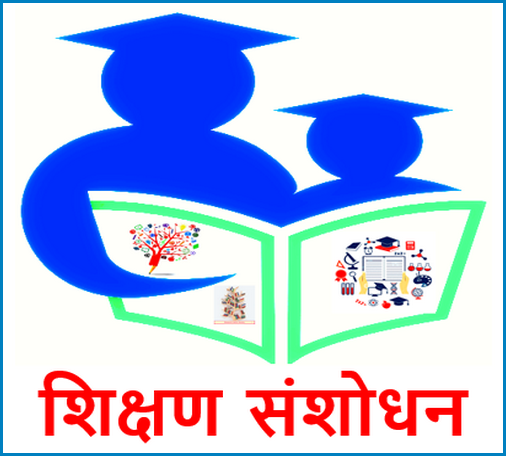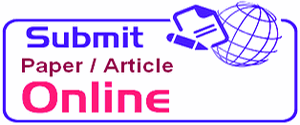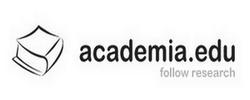Plagiarism Policy:
Submitting authors are required to acknowledge that they are aware of the Shikshan Sanshodhan’s policy on plagiarism and copyright when signing the article’s copyright transfer agreement. Manuscripts are sent out for review on the condition that any unpublished data cited within are properly credited and the appropriate permission has been sought.
Manuscript found as per journal aims, publication policy, publication ethics with a minimum originality (including AI generated content). For scientific paper/article – 80% or more originality required and For non-scientific, language, literature, humanities etc. paper/article – 75% or more originality required. Manuscript with less originality directly rejected in first editorial review of quality and originality checking.
AI Generated Content Policy: Text and contents similarity in between 5 to 15% will be allowed with proper citation in References of Paper/Article (if cited from any source match).
Plagiarism is the copying of ideas, text, data and other creative work (e.g. tables, figures and graphs) and presenting it as original research without proper citation. Separate from the issue of plagiarism is the need for authors to obtain permission to reuse previously published work (even if properly cited) from the holder of the copyright (which is typically not the author).
It is essential that editors and reviewers be told by the authors when any portion of a paper is based heavily on previous work, even if this work has been written by one or more of the authors of the paper. It is the responsibility of the author not only to cite the previous work, including their own, but to provide an indication of the extent to which a paper depends on this work.
While following these broad principles, authors should recognize the following guidelines:
1) Plagiarism covers the use of ideas that have been presented in prior work, regardless of whether the ideas are expressed using the same words, tables or graphics.
2) Word for word copying of the work by others must be clearly identified. Short segments (a few words to one or two sentences) must be put in quotes or italicized; longer segments (e.g. a paragraph) should be indented or italicized. In both cases, the quoted work has to be followed by a citation, this may be a URL. This does not apply to casual phrases that do not convey original content (e.g. “This paper makes the following contributions”). Extensive copying of the work of others, even if clearly indicated, is generally not allowed.
3) More extensive word-for-word copying of one’s own work is permitted (with permission from the holder of any copyright), but this must be clearly indicated in the article. This does not apply to previous documents such as working papers and theses which were written as part of the research. If an entire section is copied from another source (co-authored by at least one author of the submitted paper).
4) Proper attribution of an idea is required even if a journal operates with double-blind review. Authors should always cite related work even if that work is their own, even if the journal has double blind review. If an author is concerned that such citation would reveal their identity, thereby circumventing the double blind process, they should nevertheless include a “blinded” citation in the manuscript, i.e., a citation that does not include their name, and explain to the journal’s editor how, if the paper is accepted for publication, that citation will be changed for the final version.
5) The first paper in which a creative contribution occurs (text, ideas, analysis) gets the credit for the contribution, even if it has not yet been accepted for publication. Subsequent papers (by the same or different authors), are expected to cite the first paper (even if it is under review).
If the first paper is under review:
- It should still be cited in any subsequent use.
If the material in the first paper is used as the basis for new research, it should be cited, but there is no need to inform the journal handling the original submission.
If the first paper is rejected:
- Authors of the first paper can transfer credit for the contribution to a later paper (even if the first paper is resubmitted elsewhere). The resubmitted first paper should then be modified to reference the later paper that now is credited with the contribution.
If the original contribution from the first paper is essentially presented again as the main contribution (as opposed to being used as the basis for new research), as might happen in a book chapter or conference proceedings paper, then special care must be taken:
- If the original paper is still under review, the author must notify the editor of the journal reviewing the original submission and follow the policies of that journal. Failure to do so may be construed as parallel publication of a result.
The use and reuse of empirical data follows the same principles as other types of research, although some issues are unique to the nature of datas opposed to ideas expressed in text and mathematics. Some general guidelines regarding plagiarism in the reporting of empirical research are:
- a) Reuse of empirical data to support new analysis must clearly identify the original source of the data and the degree to which the data is being reused or analysed in a new and innovative way.
- b) Plagiarism in empirical research includes:
- i) Copying or using any data without citation (and permission),
ii) Duplicating analysis (on the same data as an earlier paper) without citation which is essentially the same as the earlier paper,
iii) Copying, or direct reproduction, of charts and graphs that represent data from a previous publication in effectively the same way as an earlier paper, without citation.
Mathematics: While plagiarism of mathematical ideas is not allowed (credit must be given just as for other contributions), the re-use of notation for consistency is encouraged, including the re-use of variable definitions. If a mathematical idea is copied without attribution, but expressed with different notation, this is still plagiarism. This does not apply to mathematical models and algorithms that have become common knowledge within the research community. A paper should always indicate whether a mathematical model, algorithm or other result is from the literature, or is an original contribution of the paper. When in doubt, it is always best practice to cite prior contributions.
The overarching goal of this policy is transparency, so that the editorial staffs understands what is new and original, and the degree to which the paper is drawing on the work of others or the authors. If you are not sure how to properly credit work that is presented elsewhere (such as a parallel publication which is also under review or a conference proceeding), the best strategy is to describe the situation in a cover letter to the editor.
Procedures and penalties
The Executive Editor is the primary means of detecting plagiarism in manuscripts submitted to Shikshan Sanshodhan. Complainants shall bring cases of suspected author misconduct to the attention of the Executive Editor. The Executive Editor shall ensure that the following documentation is provided: written description of the alleged misconduct; title of the manuscript; full list of author names; for alleged plagiarized manuscript – title, list of author names and publication in which the manuscript appeared; for use of ideas – title of idea, full list of creators and date of creation; copies of both manuscripts; full name and address of complainant. An Executive Editor after being made aware of a suspicion of plagiarism shall review all evidence and make a preliminary judgment regarding the claim. It is required that the authors be contacted and provided an opportunity to rebut the charge.
Penalties for Plagiarism
When plagiarism has been found to have occurred, Shikshan Sanshodhan will take the actions listed below as determined by the type of plagiarism.
The authors will be asked to write a formal letter of apology to the authors of the plagiarized paper, including an admission of plagiarism.
If the paper is under submission, the paper can be automatically rejected by the Managing Editor or the Editor board without further revisions and without any further plagiarism investigation coordinated by the Managing Editor.
The Managing Editor,
Shikshan Sanshodhan
![SHIKSHAN SANSHODHAN [ ISSN(O): 2581-6241 ] Peer-Reviewed, Referred, Indexed Research Journal.](https://shikshansanshodhan.researchculturesociety.org/wp-content/uploads/SS-TITLE-HEADER.png)




